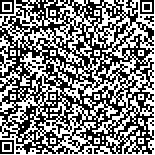|
| 引用本文: | 李文涛,王欢,仲崇凤,张沛东,康斌.山东荣成马山里海域大型藻类群落结构时空变化研究[J].海洋科学,2022,46(5):74-85. |
| |
|
| |
|
|
| 本文已被:浏览 1172次 下载 2283次 |

码上扫一扫! |
|
|
| 山东荣成马山里海域大型藻类群落结构时空变化研究 |
|
李文涛, 王欢, 仲崇凤, 张沛东, 康斌
|
|
中国海洋大学 海水养殖教育部重点实验室, 山东 青岛 266003
|
|
| 摘要: |
| 山东半岛东端以岩基海岸为主, 而浅海多为岩礁底质, 适宜大型藻类生长。为探究该海域的大型藻类群落结构特征, 于2018年11月(秋)、2019年2月(冬)、5月(春)和8月(夏)对山东荣成马山里海域的3个典型生境(草床区、天然礁区和泥沙区)中的大型藻类进行了调查。结果显示: 3种生境共鉴定出大型藻类23种, 其中红藻门15属15种, 褐藻门3属4种, 绿藻门3属4种。物种数最高值出现在天然礁区(22种), 最低值出现在泥沙区(12种)。生物量最高值为春季草床区(1 567.44±21.29) g·m–2、最低值为秋季的泥沙区(594.45±107.06) g·m–2。大型藻类优势种在不同生境、不同季节不同: 草床生境为小珊瑚藻(Corallina pilulifera), 在4个季节中均占绝对优势; 礁区为绿藻向红藻、褐藻变化; 泥沙区为从红藻到褐藻变化。Pielow均匀度指数的最高值在3个生境中相近且均出现在冬季; 多样性指数最高值、最低值分别出现在礁区与泥沙区; Margalef丰富度指数的最高值出现在秋季的礁区, 而最低值出现在夏季的泥沙区; 聚类与排序结果表明, 大型藻类群落结构在不同生境间、不同季节间均有显著差异。结果表明, 生境特征和季节性变化是影响底栖大型海藻群落结构的主要因素。 |
| 关键词: 大型藻类 群落结构 物种多样性 时空变化 |
| DOI:10.11759/hykx20210928003 |
| 分类号:S932.7 |
| 基金项目:国家重点研发计划(2019YFD0902101); 国家自然科学基金(42076100 & U20A2087) |
|
| Spatial and temporal variations in the benthic macroalgal communities along the Mashanli coast of Rongcheng, Shandong Province, China |
|
LI Wen-tao, WANG Huan, ZHONG Chong-feng, ZHANG Pei-dong, KANG Bin
|
|
The Key Laboratory of Mariculture, Ministry of Education, Ocean University of China, Qingdao 266003, China
|
| Abstract: |
| Most of the coasts of the Eastern Shandong Peninsula and the sea beds at the shallow coastal area are rocky, and these rocky shores are generally suitable for macroalgal growth. In order to study the macroalgal community structure in this area, an investigation was conducted in November 2018 and in February, May, and August of 2019 in three habitat types: seagrass bed, reef area, and sandy area. The results showed that 23 macroalgal species were identified: 15 genera, 15 species of Rhodophyta; 3 genera, 4 species of Phaeophyta; and 3 genera, 4 species of Chlorophyta. The highest number of species (22) was recorded in the reef area, while the lowest (12) was in the sandy area. The highest biomass of benthic macroalgae was found in the seagrass bed in summer (1, 567.44± 21.29 g·m?2) and the lowest in the sandy area in autumn (594.45±107.06 g·m?2). The dominant macroalgal species varied with habitats and seasons. Red alga of Corallina pilulifera dominated in the seagrass bed in the four seasons. The dominant species shifted from green to red and brown algae in the reef area and from red to brown algae in the sandy area. The highest values of the Pielow evenness index were similar in the three habitats and were all recorded in winter. The highest and lowest diversity indexes were observed in the reef and sandy areas, respectively. The Margalef richness index was the highest in the reef area in autumn, whereas the lowest value appeared in the sandy area in summer. Results of cluster and ordination analyses showed significant differences in the structure of benthic macroalgal communities in different habitats and seasons. The results indicated that habitat and season had a significant effect on the structure of the benthic macroalgal community. |
| Key words: macroalgae community structure species diversity temporal and spatial variation |
|
|
|
|
|
|
